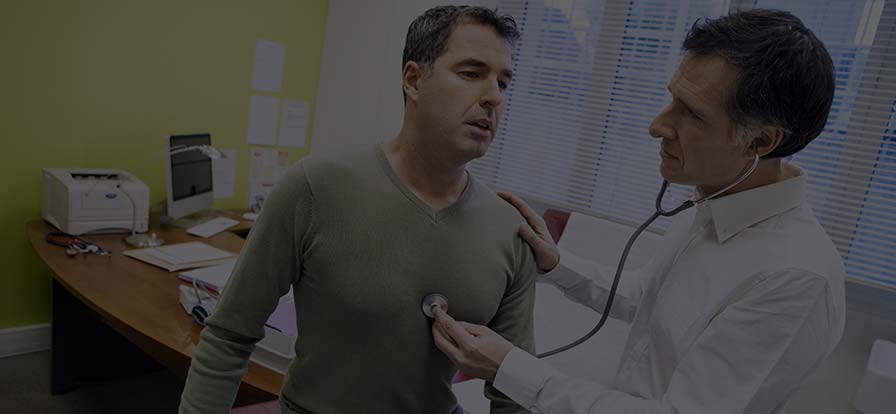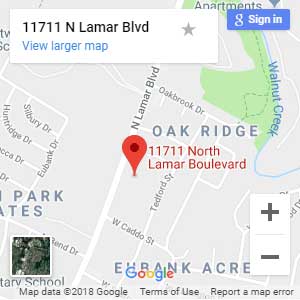
How Long Does Hydrocodone Withdrawal Last?
The safest & most comfortable hydrocodone detox program
Get Help Today.
Hydrocodone products are the most commonly misused type of prescription painkillers in the U.S., and in 2017, 6,262 people (2.3 percent of the U.S. population) misused hydrocodone products.1 The American Society of Addiction Medicine also reports about 2 million people have a substance use disorder involving prescription opioids.2
While the majority of people (62.6 percent) say they abuse hydrocodone for pain-relieving purposes, about 13 percent of people who misuse it do so purely to get high.1 The repeated misuse of any prescription drug, including hydrocodone, can quickly lead to tolerance, dependence, and addiction, but getting off the drug isn’t so easy.
For those who are addicted, hydrocodone withdrawal can be a major deterrent that keeps them from getting sober. While the thought of enduring hydrocodone withdrawal can be scary, there are ways to ease the discomfort of hydrocodone withdrawal symptoms and achieve long-term sobriety.
In this blog, we’ll discuss how withdrawal works, what kind of hydrocodone withdrawal symptoms you can expect, how long hydrocodone withdrawal lasts, and what you can do to ease the discomfort of withdrawal symptoms.
Side Effects of Hydrocodone Addiction
Hydrocodone is an opiate analgesic and a prescription pain reliever. It’s used in combination with other drugs like ibuprofen and acetaminophen to treat moderate to severe pain or to relieve a cough. When it’s used to treat pain, it binds to opioid receptors throughout the central nervous system and changes the way the body feels and responds to pain.3
When someone abuses hydrocodone by taking a very large dose of it, a rush of dopamine is triggered, and the person experiences feelings of euphoria and what we know as a “high.” These feelings often motivate a person to continue abusing hydrocodone, which can cause addiction.
Common side effects of hydrocodone addiction include:
- Dizziness
- Sleepiness
- Headaches
- Confusion
- Slower heartbeat
- Slowed breathing
- Nausea
- Vomiting
- Ringing in the ears
- Blurred vision
- Depression
- Cold, clammy skin
- Muscle weakness4
What is Hydrocodone Withdrawal?
Heavy abuse of hydrocodone over time can cause a person to develop a tolerance. When this happens, the person needs larger doses of hydrocodone to feel its effects and the body has become accustomed to its constant presence.
If a person who addicted to hydrocodone stops taking it or cuts back, their body will need time to recover and catch up. This causes uncomfortable physical and psychological symptoms like muscle aches, sweating, anxiety, and abdominal cramping, among others. These symptoms are known as withdrawal.
Even if a person wants to stop using hydrocodone, often times they may feel trapped because the hydrocodone is the only thing that keeps the uncomfortable symptoms of withdrawal at bay. Hydrocodone withdrawal symptoms can be mild to severe, depending on the person, their drug abuse history, and several other factors, but any type of opiate detox and withdrawal is best completed under the supervision of a doctor.
How Long Does Hydrocodone Withdrawal Last?
Since hydrocodone withdrawal can cause mild to severe discomfort, many people wonder how long it lasts. Although it’s impossible to predict exactly how long hydrocodone withdrawal will last, the duration and severity of withdrawal symptoms will vary depending on the following factors:
- Your metabolism
- Your genetics, body weight, gender, and age
- Any mental health or physical health problems you have
- How much hydrocodone you typically take in a dose
- The severity of your hydrocodone addiction
- If you abuse other drugs with hydrocodone
Hydrocodone Withdrawal Timeline
Hydrocodone withdrawal is a highly individualized experience, so no two people will experience withdrawal in the same way. However, the timeline below is a general guide for what you can expect during hydrocodone withdrawal.5
| Hydrocodone Withdrawal Timeline | |
| 6-12 hours after the last dose: | Early symptoms of hydrocodone withdrawal appear during this time and may include anxiety, muscle aches, insomnia, sweating, runny nose, teary eyes, and yawning. |
| 24 hours after the last dose: | Hydrocodone withdrawal symptoms typically peak around this time, with abdominal cramping, nausea, vomiting, and diarrhea being common. Additional symptoms may include dilated pupils, goosebumps, high blood pressure, and rapid heartbeat. |
| 5 to 7 days after the last dose: | Most hydrocodone withdrawal symptoms usually start to taper off about 72 hours after the last dose, but may last up to a week. Other psychological symptoms may linger for several weeks or months if they are left untreated. |
What Are the Symptoms of Withdrawal from Hydrocodone?
Hydrocodone withdrawal symptoms may vary from person to person, but some of the most common symptoms of withdrawal from hydrocodone are:
- Anxiety
- Insomnia
- Muscle aches
- Teary eyes
- Agitation
- Excessive sweating
- A runny nose
- Yawning
- Stomach cramps
- Diarrhea
- Dilated pupils
- Goosebumps
- Nausea
- Vomiting6




How to Ease Hydrocodone Withdrawal Symptoms
Withdrawaling from any drug can be very hard and dangerous, but there are ways to safely and effectively ease hydrocodone withdrawal symptoms.
The safest way to treat hydrocodone withdrawal is with medication, clinical therapy, and support in a professional environment like a detox center People who complete detox at a hospital generally have very severe symptoms, but a detox center can accommodate people with mild to severe withdrawal symptoms by providing individualized medical and clinical care in a safe environment.
Some common medications that may be used to ease hydrocodone withdrawal symptoms include:
- Methadone – This medication relieves withdrawal symptoms and is also used for opioid maintenance therapy.
- Buprenorphine – This medication can shorten the length of detox and treat withdrawal symptoms. It can also be combined with Naloxone to prevent misuse and dependence.
- Clonidine – This medication helps reduce opioid withdrawal symptoms but is limited, as it does not reduce cravings.
- Naltrexone – This medication can help prevent relapse after detox.6
Many people also complete opioid maintenance therapy to eliminate symptoms of opioid withdrawal and gradually taper down off of opioid drugs completely. However, this isn’t always the best option for everyone who is addicted to hydrocodone.7 For instance, people who have suffered from alcohol or drug use disorders in the past or who struggle with chronic relapse may not be the best candidates for opioid maintenance therapy.
After detox and withdrawal, many people who are recovering from hydrocodone addiction continue their treatment with an inpatient or outpatient rehab program. This next level of addiction treatment provides behavioral therapy to address the contributing factors and root causes of the addictive behavior.
Additional continued care options after detox and withdrawal include:
- Intensive outpatient program
- Sober living program
- Personal monitoring program
- Narcotics Anonymous (NA) meetings
If you or a loved one is addicted to hydrocodone, a medical detox program can ease the uncomfortable symptoms of hydrocodone withdrawal so you can rest, heal, and recover. Call Briarwood Detox Center today to learn more about our personalized opioid detox programs, comfortable amenities, and executive detox options in Houston, TX.
References:
- https://www.samhsa.gov/data/report/2017-nsduh-annual-national-report
- https://www.asam.org/docs/default-source/advocacy/opioid-addiction-disease-facts-figures.pdf
- https://www.verywellhealth.com/hydrocodone-for-pain-management-2564540
- https://www.healthline.com/health/understanding-hydrocodone-addiction#symptoms
- https://www.healthline.com/health/opiate-withdrawal
- https://medlineplus.gov/ency/article/000949.htm
- https://www.mdedge.com/clinicianreviews/article/72298/pain/methadone-maintenance-therapy-opioid-addiction
Break Free From Your Addiction Today
(in 3 easy, confidential steps)

Verify your insurance
Complete our fast, free, and easy verification process over the phone to determine the extent of your insurance coverage.

Make an informed decision
We will provide personalized placement recommendations based on your insurance, treatment needs, financial situation, and schedule.

Contact us
Call (888) 857-0557 or fill out our online form for a free and confidential personal consultation with an admissions specialist.







